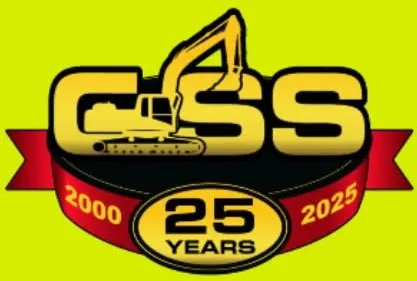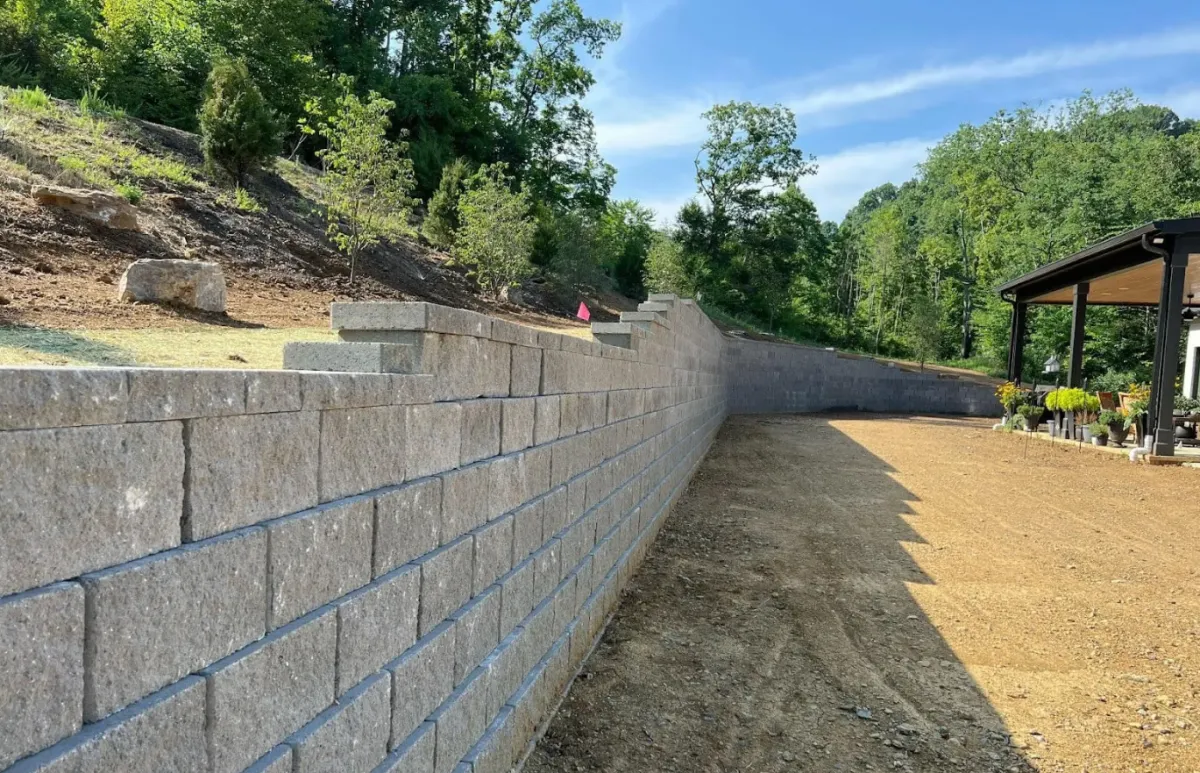
Proudly Serving: Grand Isle, Franklin & Chittenden Counties, VT and Clinton County, NY

Cracked or Leaning Retaining Wall near Burlington, VT? What Homeowners Should Know
1. Why Your Retaining Wall Is Starting to Fail (And Why It’s Not Your Fault)
You probably didn’t expect to be thinking about retaining walls today.
But now you're noticing cracks. Maybe the wall is starting to lean. Maybe chunks are falling out or the dirt behind it is washing away every time it rains. It's frustrating. You’re not sure how bad the damage is or how expensive it’ll be to fix. You just know this wasn’t on your to-do list—and you're hoping it doesn’t get worse.
We get it.
At Complete Excavation & Septic, we’ve worked with dozens of homeowners across Burlington and the rest of Chittenden County who feel the same way. And here's the truth: most of the time, it's not your fault. These walls are supposed to hold back tons of earth—literally. But Vermont weather, soil shifts, and poor construction can push them past their limits.
Let’s walk through what’s happening, what it means, and what you can do to fix it—without spending money you don’t need to.
2. The Most Common Retaining Wall Problems in Burlington
Here in Vermont, we see the same issues again and again, especially in older or DIY-built walls:
Cracking concrete or stone
Leaning or bulging outward
Separating joints or blocks
Water pooling or drainage issues
Erosion at the base or behind the wall
Partial or total collapse
These aren’t just cosmetic issues. They signal real problems beneath the surface—literally.
3. Cracks, Leaning, and Collapse: What Each Problem Actually Means
Let’s break down what each of these red flags is trying to tell you:
Cracks (especially stair-step or horizontal ones) often mean the soil behind the wall is expanding from moisture or frost. That pressure pushes the wall outward, and the wall responds by splitting.
Leaning is a big sign that the wall is losing its grip. Either the footing wasn’t deep enough, the base shifted, or hydrostatic pressure is building up behind it.
Collapse sounds dramatic—and it is. If your wall is bowing, crumbling, or chunks are falling out, it's at the end of its rope. Safety becomes a real concern, especially if the wall is tall or near a walking path, driveway, or building.
4. How Vermont’s Climate Wears Down Your Retaining Wall
Burlington’s freeze-thaw cycles are no joke.
When water seeps into the soil behind your wall and freezes, it expands. That expansion creates massive pressure. In spring, that ice melts, the ground shifts, and your wall moves. Repeat that process dozens of times a year for a few years, and suddenly your wall’s had enough.
Heavy spring rains don’t help either. If your wall wasn’t built with the right drainage, water gets trapped behind it. That water weight is like a truck pushing against your wall every time it rains.
5. DIY Fixes vs. Professional Help: When to Call in the Experts
We understand the temptation to try and fix it yourself—especially if it just looks like a few cracks or minor leaning.
But here’s the thing: most retaining wall issues start underground, where you can’t see them. Throwing more dirt on it, patching cracks with mortar, or propping it up with a few stakes might feel like a quick win—but often makes things worse long-term.
If your wall is:
Leaning more than 2 inches
Cracked all the way through
Holding back more than 3 feet of soil
Near a structure, driveway, or fence
...it’s time to call someone who knows what they’re doing. You don’t want to gamble with a structure that holds back tons of soil.
6. What a Proper Inspection Looks Like (And What Most Contractors Miss)
When we show up to inspect a retaining wall, we don’t just look at the wall itself. We check:
The drainage system behind it (Is water trapped?)
The base and footing (Is it deep and solid?)
The type of soil (Clay, sand, loam—it matters)
How tall the wall is and what it supports
Signs of frost heaving or erosion
Unfortunately, a lot of builders skip these steps when they put in the wall in the first place. Or worse—they assume retaining walls are just glorified fences. That’s how problems start.
7. Cost to Repair or Replace a Failing Retaining Wall in Chittenden County
Alright—let’s talk numbers.
Every project is different, but here’s a ballpark for what homeowners in Burlington are spending:
The more access we have, and the simpler the wall, the more affordable it usually is. Walls that require permits, structural reinforcements, or deal with tight urban spaces may push the higher end.
8. How We Customize Retaining Wall Repairs for Burlington Homes
At Complete Excavation & Septic, we never just show up with one solution in mind. Here’s how we approach it:
We inspect the wall and soil thoroughly
We listen to your concerns and budget
We walk through your options—from minor fixes to full rebuilds
We design for Vermont’s seasons (drainage, frost depth, snow load, etc.)
We build it to last, using high-quality materials and modern methods
You won’t get some cookie-cutter wall slapped together in a weekend. You’ll get something solid, designed to hold up against real winters and real rain.
9. How to Prevent This from Happening Again
Whether you repair the wall or rebuild it, here's how to keep it strong for decades:
Install a good drainage system behind the wall (like perforated pipe and gravel backfill)
Use the right materials for your soil type and slope
Avoid planting large trees near the wall—their roots can push and pull
Keep an eye on water flow in your yard; redirect downspouts away from the wall
Clear snow gently if it piles against the wall in winter
These steps don’t cost much, but they make a huge difference in how long your wall lasts.
10. When a Retaining Wall Is Beyond Repair (And What to Do Next)
Sometimes, the safest—and cheapest—option long term is to start fresh.
If your wall is severely leaning, has deep structural cracks, or is made of rotting wood, it might not be worth patching. We’ll be honest with you about that. In those cases, we’ll help you:
Design a better wall
Choose the right materials for your property
Handle permits if needed
Build something that won’t give out in five years
No pressure. No pushy sales tactics. Just real solutions from people who live and work in the same climate as you.
11. Final Thoughts from Complete Excavation & Septic
Retaining walls aren’t glamorous. But they matter.
They hold back your land. They keep your yard safe. They support driveways, patios, and even your home’s foundation. When they start to fail, it’s scary—and often overwhelming.
At Complete Excavation & Septic, we’ve helped homeowners across Grand Isle, Franklin, and Chittenden Counties find peace of mind again. You don’t need to know all the technical stuff—that’s our job. You just need someone who’ll show up, walk you through it clearly, and actually fix the problem the right way.
If your wall is showing signs of wear, or you just have questions, reach out. We’re here to help, no stress, no pressure.

Hours:
Mon - Fri 9:00 am - 5:00 pm
Extended hours by appointment only.



All rights reserved | Privacy policy | Client Support Area
Disclaimer: Septic inspection credit is applied to septic installations only and must be redeemed within 7 days after a written quote provided upon state acceptance of design.
Disclaimer: Septic soil test credit is applied to septic installations only and must be redeemed within 7 days after a written quote provided upon state acceptance of design.
